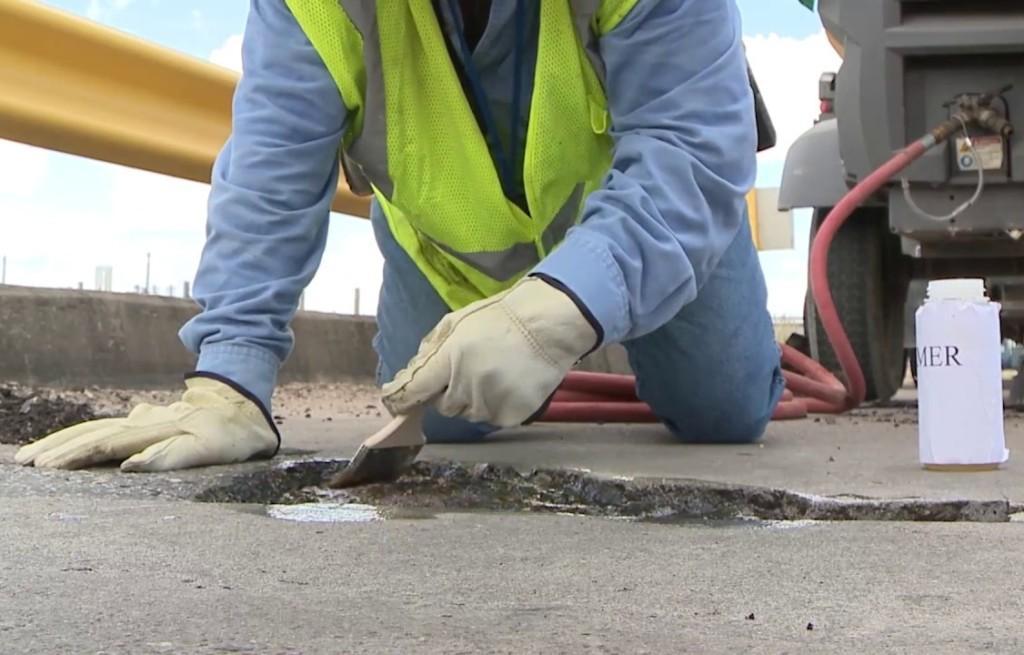Concrete is one of the most widely used construction materials in the world. However, traditional concrete made from just cement, aggregate, and water has inherent weaknesses like low tensile strength and permeability issues. Polymer concrete addresses these weaknesses by adding polymers to the concrete mix, making it a more advanced and durable building material. This article discusses the composition, properties, applications, and future potential of polymer concrete.
What is Polymer Concrete?
Polymer concrete, also known as polymer cement concrete, is a composite material that consists of conventional concrete ingredients such as aggregates held together in a polymer resin binder matrix instead of a cement matrix. The polymer used is usually an unsaturated thermosetting resin like epoxy, polyester, or vinyl ester, which cures and hardens after mixing and laying. This resin binds the aggregates together and penetrates the pores between them, resulting in a material that is waterproof, corrosion-resistant, and stronger.
Composition and Production
The typical components of polymer concrete are aggregates, polymers, fillers, reinforcements, and additives. Common aggregates used include quartz, flint, granite etc. Epoxy resins are the most popular polymers due to their excellent adhesion and chemical resistance properties. Fillers like sand help reduce costs. Carbon or glass fibers are added as reinforcement. Production involves dry mixing of aggregates and fillers followed by mixing with liquid polymers which are then laid, compacted, and allowed to cure. The curing process activates cross-linking reactions within the polymers which strengthen the structure.
Benefits over Conventional Concrete
High Strength and Durability
The polymer matrix binds the aggregates tightly, eliminating voids and weaknesses. This imparts 5-10 times higher tensile and compressive strengths compared to cement concrete. Polymer concrete also has excellent longevity with life expectancy of over 50 years even under harsh conditions.
Water and Chemical Resistance
The impermeable thermosetting polymers make polymer concrete highly waterproof and resistant to chemical attack from salts, acids, alkalis etc. It does not absorbs water or allow infiltration.
Abrasion Resistance
The matrix protects aggregates from wear and impact forces. Polymer concrete exhibits extremely low wear rates, making it suitable for applications with heavy abrasion.
Low Permeability and Shrinkage
With no porosity, polymer concrete does not permit passage of liquids, gases or corrosive ions. It also exhibits negligible drying shrinkage compared to cement concrete.
Improved Workability and Fast Curing
Thermosetting polymers allow polymer concrete to retain workability for extended periods. It can also set, gain strength and open for use within hours compared to days for cement concrete.
Applications of Polymer Concrete
Due to the advantages discussed above, polymer concrete finds wide application in the following areas:
Flooring
It is used for industrial, commercial and marine flooring where high strength, durability, chemical resistance and low dusting is required. Areas include food processing plants, laboratories, hangars etc.
Wastewater Systems
Critical components in sewage and wastewater treatment systems like digesters, clarifiers are constructed using polymer concrete for its corrosion resistance and impermeability.
Architectural Elements
It is favored for demanding architectural precast products such as exterior wall panels, roofing tiles due to durability against ultraviolet radiation and weathering.
Repair and Rehabilitation
Polymer Concrete is used as an overlay or patching material for the repair and rehabilitation of deteriorated concrete structures with applications from bridge and dam repair to industrial floor overlays.
Other Uses
Other uses include tanks and pipes for acids/chemicals, sound barriers, counter-tops and pipe covers. In marine applications, it is used for ship ballast tanks, propeller shafts and rudders due to erosion resistance.
Future Prospects
With the superior engineering properties, polymer concrete presents a very promising construction material for the future. Ongoing research targets developing:
- High performance hybrid composites by optimizing resin/filler ratios and using nano-fillers, carbon fibers etc.
- Self-compacting and self-leveling formulations for ease of application.
- Conductive varieties for applications like sensor devices.
- Encapsulation of wastes like fly ash to reduce environmental impacts.
Polymer concrete segment is growing at 5-10% annually. If production challenges are overcome through advancements, it has huge potential to replace conventional concrete in multitude of applications worldwide thereby revolutionizing the construction industry.
Incorporation of polymeric materials in concrete has enabled development of an advanced building material with vastly improved mechanical, physical and durability characteristics compared to plain cement concrete. Polymer concrete exhibits properties that are closer to metals and plastics. With ongoing research and development, it is poised to emerge as a prominent construction material of the future.
For More details on the topic:
https://www.insightprobing.com/polymer-concrete-size-and-share-analysis/



